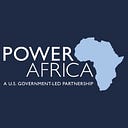Delivering Cleaner, “Smarter” Cooking Systems to Underserved Communities in Kenya
Caroline Akinyi[1] runs a small clothing store in Kisumu, Western Kenya. Like most people in her neighborhood, she used to cook with polluting fuels that damage human health and the environment. As Caroline recalls:
“I used to use either kerosene, charcoal, or firewood. I purchased these from the local market and because of rare availability, I could spend a total of $4.50 (500 Kenyan shillings, KES) each week. These were the safest fuels I could use because I have a little child aged ten years and my worst fear was him getting burnt. I’ve heard stories that LPG burnt a house so I was very worried that with a kid, I might get the house burnt down.”
The solution to Caroline’s fears about liquefied petroleum gas (LPG) was a pay-as-you-cook (PAYCook) system pioneered by Power Africa partner Bboxx, one of three recipients of a USAID-funded Power Africa grant focused on distributed electricity services and modern cooking fuels. Bboxx’s PAYCook LPG product provides more affordable, safer, and cleaner cooking, and eliminates many of the barriers that often prevent people from cooking with LPG.
In the Bboxx configuration, customers do not have to pay a large sum up-front for the hardware, and instead receive a two-burner stove, an LPG cylinder, and a gas regulator that is financed over three years. Customers purchase gas credits in small increments as they need them via mobile money. An internet-connected smart meter attached to the LPG fuel cylinder tracks the amount of gas used and is turned off automatically when customers deplete their credit. This allows Bboxx customers to “pay as they cook,” which makes transitioning to LPG financially feasible for those with low and uncertain incomes. Bboxx takes responsibility for delivering, installing, and refilling the fuel cylinders, and guarantees the safety of the system.
Caroline found the safety and affordability of the system appealing. “After meeting the Bboxx agent and learning about the product and payment terms, I was comfortable with the ease of use and safety. It automatically shuts off if gas is released over time without use, and the payment terms are very favorable.”
In the four months since she received her Bboxx system, Caroline has been delighted with her purchase. Citing the cost-efficiency of the system, she noted:
“Bboxx LPG saves me money; with $2.70 (300 KES) of credit, I can cook comfortably for a week, even githeri [2]. It’s also faster, safer, and efficient. I’m very happy that Bboxx has kept the promise that I’ll never run out of gas. The cylinder exchanges are seamless, and now I’m not worried about how I’ll cook any time.”
The benefits of LPG extend beyond safety and affordability. Transitioning to LPG for cooking also contributes to Sustainable Development Goal 7 (SDG 7), which calls for universal access to affordable, reliable, and modern energy services by 2030. Three billion people in the world still cook primarily with traditional fuels such as firewood, charcoal, and kerosene. Burning these fuels produces indoor air pollution that may lead to pneumonia, lung cancer, and other diseases, resulting in four million premature deaths per year. These health conditions take an economic toll on communities and local governments.
Firewood and charcoal also drive unsustainable deforestation, which is shown to contribute to climate change. LPG cooking is widely acknowledged to be a promising solution to this problem, as it emits less carbon dioxide than conventional fuel stoves. Bboxx is also promoting LPG by establishing LPG4SDG7 with industry partners, such as the Global LPG Partnership, Clean Cooking Alliance, and Trafigura.
Through the Power Africa grant, Bboxx is piloting the coordinated delivery of LPG and off-grid electricity products in Kenya. Bboxx recruited more than 20 Kenyan staff who have all been trained on the environmental effects, safety, and health benefits of LPG.
Early results from user research (closely coordinated between Bboxx and University College London’s Royal Academy of Engineering in 2021) on the PAYCook pilot show that 60 percent of new customers came from the poorest income quintile, living on $0.75/day; a group normally excluded from cooking with cleaner fuels. Of the 58 Bboxx customers participating in the user research, 75 percent used primarily traditional fuels before purchasing Bboxx PAYCook LPG, and only 15 percent continued using traditional fuels afterward. Like Caroline, the vast majority of Bboxx customers benefited financially from switching to PAYCook LPG, saving an average of $5.40 (600 KES) per month, or 20 percent of their baseline fuel expenditure.
With Power Africa’s support, Bboxx laid the groundwork for PAYCook LPG with a successful pilot in three towns in Western Kenya. Bboxx has a retail network of more than 50 shops across the country, and next on its agenda will be scaling to rural and peri-urban locations in Kenya and beyond.
The Distributed Electricity Services and Modern Cooking Fuel Delivery grant is administered by the USAID-funded Power Africa Off-grid Project in support of Power Africa’s Beyond the Grid initiative, which contributes to the goal of adding at least 30,000 megawatts of cleaner and more reliable electricity generation capacity and 60 million new home and business connections by 2030.
[1] Name changed for anonymity.
[2] An East African dish consisting of dried maize kernels and beans that require several hours of slow boiling to rehydrate and cook.
